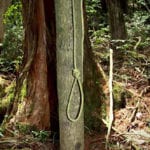 Crime
Crime  Crime
Crime  Technology
Technology 10 Hilariously Over-Engineered Solutions to Simple Problems
 Miscellaneous
Miscellaneous 10 Ironic News Stories Straight out of an Alanis Morissette Song
 Politics
Politics 10 Lesser-Known Far-Right Groups of the 21st Century
 History
History Ten Revealing Facts about Daily Domestic Life in the Old West
 Weird Stuff
Weird Stuff 10 Everyday Products Surprisingly Made by Inmates
 Movies and TV
Movies and TV 10 Actors Dragged out of Retirement for One Key Role
 Creepy
Creepy 10 Lesser-Known Shapeshifter Legends from Around the World
 Animals
Animals 10 Amazing Animal Tales from the Ancient World
 Gaming
Gaming 10 Game Characters Everyone Hated Playing
 Crime
Crime 10 Terrifying Serial Killers from Centuries Ago
 Technology
Technology 10 Hilariously Over-Engineered Solutions to Simple Problems
 Miscellaneous
Miscellaneous 10 Ironic News Stories Straight out of an Alanis Morissette Song
Who's Behind Listverse?

Jamie Frater
Head Editor
Jamie founded Listverse due to an insatiable desire to share fascinating, obscure, and bizarre facts. He has been a guest speaker on numerous national radio and television stations and is a five time published author.
More About Us Politics
Politics 10 Lesser-Known Far-Right Groups of the 21st Century
 History
History Ten Revealing Facts about Daily Domestic Life in the Old West
 Weird Stuff
Weird Stuff 10 Everyday Products Surprisingly Made by Inmates
 Movies and TV
Movies and TV 10 Actors Dragged out of Retirement for One Key Role
 Creepy
Creepy 10 Lesser-Known Shapeshifter Legends from Around the World
 Animals
Animals 10 Amazing Animal Tales from the Ancient World
 Gaming
Gaming 10 Game Characters Everyone Hated Playing
10 Harrowing Stories Of Life And Death On Mount Everest
May is the month which offers the best chances for the hundreds of people who attempt each year to reach the top of the highest mountain in the world, Mount Everest. And every climbing season on Everest, people die trying to reach the summit. You have to go all the way back to 1977 to find a year where no climbers have perished on Mount Everest. And this year has been no exception as eight people have died. This list will look at some of the lesser known fatalities and the amazing and harrowing stories behind their attempts to reach the summit of Mount Everest.

The urge to be “the first” on Mount Everest is powerful. The biggest “first” was accomplished in 1953 by Sir Edmund Hillary and Tenzing Norgay when they became the first to reach the summit and stand at the top of the world. Everything since then has been, well, second. Not to be deterred at the thought of being second, there have been all manner of attempts since 1953 at other “Everest firsts”. The first to paraglide off Everest, the first to ski down Everest, the first blind person to climb Everest, etc. The other route to “Everest fame” is to be the oldest person (or youngest) to reach the summit and as such there have been multiple people to achieve that goal and hold the title of “oldest” (“youngest”) to climb to the top of Mount Everest. That is, they hold the title until someone older or younger comes along and tops it.
In 2011, the former Nepalese foreign minister, Shailendra Kumar Upadhyay, set out to be the latest oldest man to climb to the top of Everest. He was 82 years old. He made it as far as Camp I when he became ill. He was descending back to Base Camp for medical care when he collapsed and died. His body was airlifted to the capital of Nepal, Kathmandu. He was trying to break the record held by a 76 year old Nepalese man.
In 2013, in fact, just a few days ago, Japanese climber Yuichiro Miura at the age of 80 beat that record and became the oldest person to reach the top of Mount Everest. Not only has Miura, for now, claimed the “oldest to climb and reach the top of Everest” title, he also summited Everest twice before. Even more remarkable than his age is the fact he has had four heart operations and in 2009 he broke his pelvis while skiing.

Even casual observers of the history of climbing Mount Everest know of the dangers faced by climbers. Lack of oxygen, falls, and of course the cold, the ice, the wind and the storms. Lesser known is the threat posed by the landscape the climbers must pass through to reach the summit. The Khumbu Icefall is located at the head of the Khumbu Glacier just above Base Camp on the popular South Col route to the top of Everest. As such, to reach Camp I, all climbers attempting this route to the summit must pass through the Khumbu Ice Fall after leaving Base Camp.
The glacier is moving at a rapid pace and thus crevasses open up to swallow climbers with little warning. But the real danger are the seracs – huge, house-sized, towering blocks of ice, precariously balanced and ready to tumble over at any time, with no warning what so ever. Any climber caught in the wrong place when a serac decides to give way is out of luck. With no time to jump out of the way and nowhere to go, the climber is crushed. Many times the body cannot be recovered. The glacier moves down the face of the mountain at 3-4 feet per year. Sometimes the bodies emerge, years later, deposited back at Base Camp by the glacier.
One unlucky climber who was in the wrong place was Canadian Blair Griffiths. Griffiths was a Canadian Broadcasting Company cameraman documenting the Canadian Mount Everest Expedition in 1982. Griffiths and others were securing one of the many ladders used by climbers to cross over crevasses when the glacier decided to move. A six-story serac crushed Griffiths between two gigantic blocks of ice. After several attempts his climbing partners retrieved his body which was cremated on the mountain.

Many know of the tragic 1924 British Expedition that aimed to climb Mount Everest for the first time. This expedition led to the disappearance and death of climbing legend George Mallory and his partner Andrew Irvine. Mallory’s body would be discovered in 1999 and his death appears to have been as a result of a fall. No sign of Irvine has ever been found and it remains unclear if they were the first to summit Everest and died on their descent, or if they died trying to reach the top.
Lesser know is the story of another Englishman, Maurice Wilson who ten years later, on his own, in either a fit of English eccentricity or madness (perhaps both) attempted a solo ascent of Everest. Where huge British climbing expeditions had failed before him, Wilson thought he could “do it alone”.
Believing the problems of the planet could be solved through fasting and faith in God, Wilson set out to climb Everest so as to promote his beliefs. Injured in WWI, Wilson overcame his suffering through 35 days of prayer and fasting. Wilson convinced himself that his beliefs could allow him to succeed where Mallory had failed. His plan was to fly a plane close to the summit and crash it, then walk the rest of the way (eccentric, yes, but a plan none the less). Not being able to fly an airplane and knowing nothing of climbing mountains, Wilson set out to teach himself both. He bought a used Gipsy Moth plane (which he called “Ever Wrest”) and set off for Asia by air. His mountaineering experience and training was even worse than his flying. He took off in 1933, crashed his plane, was grounded by the British Air Ministry, ignored the ban, and took off again.
Somehow, in two weeks, he made it to India. He wintered over near Tibet; by chance meeting three of the Sherpa’s who had worked previous British Everest expeditions. They joined Wilson and slipped into Tibet. He made his first attempt and was beaten back by the weather and his inexperience. After a time to recover his strength he set off again, this time with two of the Sherpa’s to guide him. He made it to an altitude of 22,700 feet where he encountered a forty foot ice wall. Defeated again, he and the Sherpa’s turned back. The Sherpa’s begged him to come down the mountain with them but he refused and in a gesture of British stubbornness that would make Robert Falcon Scott happy, he made one more attempt. This too failed. He died days later in his tent, just like Scott.
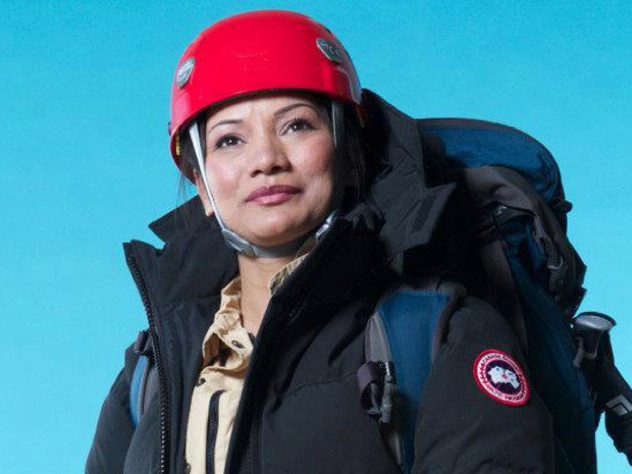
Although recovering bodies from the Death Zone on Everest is extremely dangerous, it has been done. One such example was the recovery of the body of Canadian climber Shriya Shah-Klorfine. Born in Nepal, climbing Everest had always been a dream for the 33 year old Canadian when, on May 19, 2012, she died trying to descend the mountain. Three other climbers would die that same day. The dangers of dying and having your body left behind on the mountain are not unknown to climbers, in fact, some Everest guide services have climbers sign a form asking them to choose to remain on the mountain should they die, or have an attempt made to recover their body (which can cost upwards of $30,000).
Ms. Shriya Shah-Klorfine died very near the summit, at an altitude of over 8,000 meters (nearly 27,000 feet). This would make her recovery very challenging. First a team of 6-8 Sherpa’s must climb the mountain to reach her body – dangerous enough on its own. Then the real danger begins. The only way to bring down a body from that altitude is to place it in a sled while the Sherpa’s, slowly, carefully, lower it (in a controlled slide) down the mountain at angles as steep as 60 degrees. They also need to pick up the body and lift it by hand over any crevasses encountered along the way. The trip down the mountain can take an entire day. It is very dangerous work on the steep icy mountain face. One slip and everyone on the ropes could fall to their own deaths. The goal is to lower the body to the elevation of Camp II (6,500 meters) which is the highest point on the mountain reachable by helicopter (to land, take on a load, and take off again). On May 29, 2012, the body of Ms. Shriya Shah-Klorfine was safely recovered.
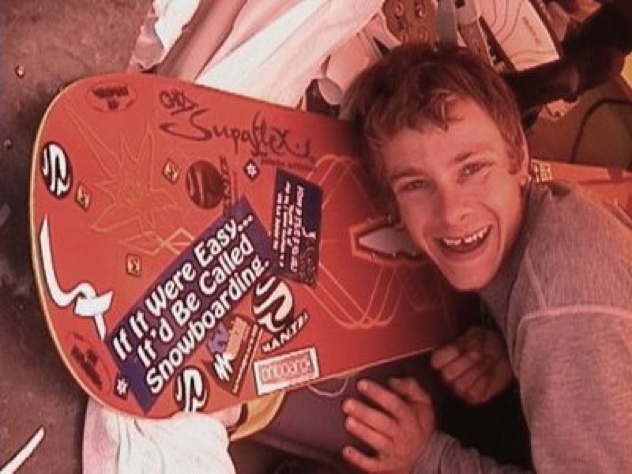
The goal of Marco Siffredi was simple – become the first person to snowboard down Mount Everest. At the age of 22 in May of 2001 Marco summited Mount Everest with the plan to snowboard the Hornbein Couloir. But there was not enough snow that spring for him to snowboard that route. Instead he went to plan B and set off on his snowboard down the North Col Route. On the way down one of the bindings on his snowboard broke but he and a Sherpa were able to repair it. He eventually snowboarded all the way down to Advanced Base Camp, becoming the first person to successfully snowboard, continuously, down Everest. It took him four hours to do it.
However, his true goal has eluded him. He returns to Everest the following year, but fatefully, he forgets to bring the lucky cross he always wears around his neck. Marco has come in August this time hoping the snow will be deep enough to snowboard down the “true face” of Everest, the Hornbein Couloir. The Hornbein Couloir is the most steep and most continuous descent possible from the summit. This time there is plenty of snow, too much and he needs to wait for avalanches to subside. He and his team begin their ascent, establishing base camp and higher camps as they climb, sometimes in waist deep snow. Along the way Marco’s radio breaks. A new one is on its way back up to Marco to aid him in communicating with Sherpa’s and those below as he snowboards down the mountain, but he receives a good weather forecast and jumps at the chance to summit and snowboard. He sets off without the radio.
At 2:00 PM he and his Sherpa helper’s reach the summit after a 12 hour climb through chest deep snow. Marco tells his Sherpa he is “tired”. His Sherpa is elated at reaching the summit, but then his Sherpa doesn’t have a 3,000 foot of descent by snowboard at 45-55 degree angles yet to do. It is late in the day, 3:00 PM and his Sherpa’s urge him not to go, but Marco has come too far to not give his dream a try. So he tells his Sherpa he will ‘see him tomorrow” and pushes off down the face of the Hornbein Couloir. The last the Sherpa’s see of him is when he hangs the left away from their descent route to snowboard down the Hornbein Couloir. Later they believe they see a figure sliding down the face of the North Col. But there is nobody else climbing Everest at this time of the year, they have the mountain to themselves. Who could it be? The Sherpa’s descend to the bottom of the Hornbein Couloir.
Marco should be there as it would only take him two hours to snowboard the route. The Sherpa’s reach the point on the North Col. where they are certain they saw the man. There are no snowboard tracks. It appears Marco has fallen to his death. With no radio to even try to contact him, Marco has disappeared. A search party finds his snowboard tracks end about 1,500 feet down the Hornbein Couloir from the summit where he set off. His body has still not been found.
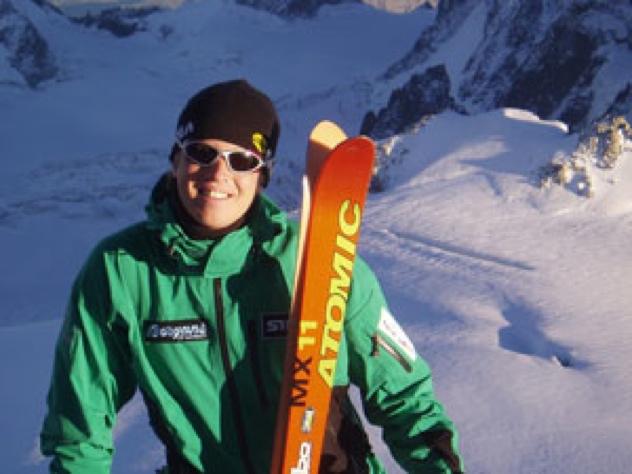
As if climbing Mount Everest is, in and of itself, not difficult or “extreme” enough, some extreme sports people need to take it even farther. Such was the case of Swedish skier Tomas Olsson and his partner Tormod Granheim who in 2006 wanted to be the first to descend the North Col (North Face) Route by ski. That’s right, ski down from the summit of Everest via one of the most difficult of all the difficult routes to the top of the mountain.
On May 16, 2006, after a full day of climbing, the two met up on the mountain and reached the summit. Exhausted, they wondered if they had the strength to ski down. Undeterred by their fatigue, they set off on skis down the North Face via the Norton Couloir at angles as steep as 60 degrees and a shear 3,000 meter drop. Unfortunately, just as they set off, and after only skiing down the North Face approximately 1,500 feet, one of Olsson’s skis broke. They tried to repair the ski with tape but at 27,900 feet, they reached a 150 foot rock cliff on the couloir. This they could not ski even with undamaged equipment so they tried to rappel down.
They set a snow anchor because they could find no good rock to set screws. Olsson went first, rappelling down the cliff still wearing his skis, when the snow anchor they were using failed and Olson fell 2,500 meters to his death. Granheim continued on alone by ski and by climbing and made it down the mountain alive. Several days later Olsson’s body was found by Sherpa’s at 22,000 feet.

The popular South East Ridge Route to the top of Mount Everest was at one time called by climbers “The Rainbow Valley” because of the sheer number of bodies that littered the route to the summit, all dressed in various colorful climbing gear. It was impossible to summit by this route without coming close to and seeing many of these dead climbers. Over the years, climbers have cut ropes and pushed some of these bodies over the side while snow and ice have covered others. But even today, multiple bodies are visible along the South Ridge Route.
One infamous example was that of German climber Hannelore Schmatz. In 1979 she died on her descent after summiting. At the time she was the first woman to die on the upper slopes of Everest. Exhausted and caught at 8,300 meters (27,200 feet) just below the summit, Ms. Schmatz and another climber made the decision to bivouac as darkness fell. The Sherpa’s urged her and American climber Ray Gennet to descend, but they laid down to rest and never got up. Genet’s body disappeared and has never been seen, but for years, climbers would pass the frozen remains of Ms. Schmatz, still sitting and leaning against her pack, eyes wide open and long hair blowing in the constant wind. A climber who had to pass her body to reach the summit described the experience: “It’s not far now. I cannot escape the sinister guard. Approximately 100 meters above Camp IV she sits leaning against her pack, as if taking a short break. A woman with her eyes wide open and her hair waving in each gust of wind…..it feels as if she follows me with her eyes as I pass by. Her presence reminds me that we are here on the conditions of the mountain.”
Five years after she died, two climbers attempted to recover her body. Yogendra Bahadur Thapa and Sherpa Ang Dorje somehow became tangled in their ropes and both fell to their deaths while trying to recover the body. Years later the wind finally blew her body over the edge of the mountain.

Perhaps the most infamous of all the dead bodies climbers must pass along the Northeast ridge route to the summit of Everest is a body known as “Green Boots”, believed to be the body of Indian climber Tsewang Paljor. The name comes from the green mountaineering boots he is still wearing and which stick out from the entrance to the small cave where his body can be found lying on its side. The body and cave are located at 27,890 feet (8,500 meters). It is thought “Green Boots’ crawled into the cave in a desperate effort to survive.
In the same year (1996) as the ill-fated Everest climbing season told in the book “Into Thin Air”, a six man team from India was also trying to reach the top of Everest by the northeast route. Close to the top they were hit by the blizzard that would kill so many in the Rob Hall and Scott Fisher mountaineering parties going for the summit on the more popular southeast route. Three of the Indian climbers turned back but Paljor and two others tried for the summit and disappeared. They radioed that they had reached the summit (though there is some doubt that they did) and no further radio contact was heard from the three.
Later, a Japanese team headed for the summit may have passed the three Indian climbers but were unsure because of the conditions. When the Japanese climbers found out from one of the three Indian climbers who had turned back that their climbing companions were missing, the Japanese offered to help with the search. But the ferocious storm prevented them from searching until the next day. It is thought that “Green Boots” is one of the missing Indian climbers because he was wearing such boots on that day.
In 2006, British climber David Sharp would crawl into “Green Boots cave”. Many climbers walked right past the dying Sharp, believing him to be Green Boots. By the time aid was rendered, Sharp died.
In 2007 British climber Ian Woodall, who was on the mountain in 1996, and had been haunted by the memory ever since, attempted to climb to the cave and give “Green Boots” a proper burial. But he was unable to dig the body out of the ice due to bad weather. He was planning on making another attempt if he could raise the funds.
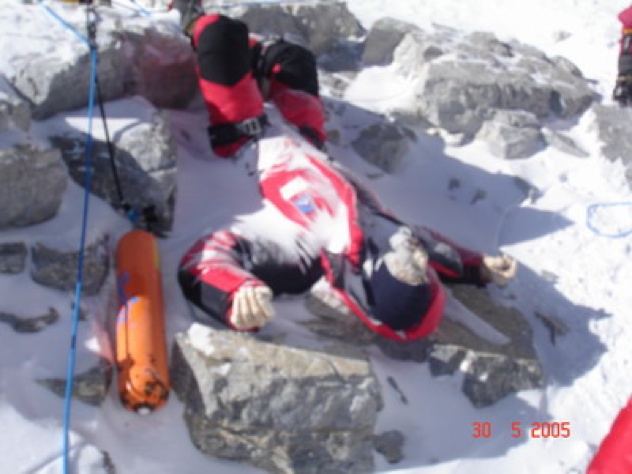
On May 22, 1998, climber Francys Arsentiev accomplished one of the “Everest Firsts”, by becoming the first woman from the USA to summit without bottled oxygen. Unfortunately, she never lived to celebrate this accomplishment. Arsentiev and her husband climbing partner Sergei Arsentiev were in position to reach the summit on May 20 and May 21 but had to turn around both times. On May 22nd on their third attempt they made it. But they had been in the “Death Zone” above 8,000 meters for almost three days. Because they were exhausted from spending so much time above 8,000 meters they summited late in the day and had to camp and spend another night above 8,000 meters. The next morning they descended but somehow got separated. Sergei reached camp and found she was not there. He immediately went back up to find her carrying oxygen and medicine.
Late that morning an Uzbek team found Arsentiev frozen and struggling to survive. They attempted to help her and brought her down as far as they could before they became too exhausted to do more. They saw Sergei on his way back up the mountain as they descended. That was the last anyone would ever see of Sergei Arsentiev alive.
The next morning a team of climbers including Ian Woodall and Cathy O’Dowd found Francys Arsentiev where the Uzbek team had left her, amazingly, still alive, but barely. Sergei had left his ice axe and rope but there was no sign of him. There was nothing Woodall, O’Dowd and their party could do to save her and she died that morning. For a true account of what happened as told by O’Dowd, read this article.
Woodall and O’Dowd gave up their own chance at summiting to stay with her and care for her as much as they could. But they had to leave her where she died, and her body remained as one of the “landmarks” along the path from high camp to the summit for all subsequent climbers to see as they passed her on their way to the top. Sergie’s body was found a year later down the mountain face. He apparently fell to his death trying to save his wife.
For almost ten years the memory of her death haunted Ian Woodall and he set out in 2007 to try to reach her body and give her some manner of dignified burial. Although he was unable to free the body of “Green Boots” on this mission back to Mount Everest he called “The Tao of Everest”, Woodall did reach the body of Francys Arsentiev. After a brief ritual, Woodall lowered her body to a lower section of the mountain where she would no longer be visible to climbers passing by on their way to the top of Mount Everest.

One of the tragedies of Mount Everest is climbing it has become such an obsession for thousands of people that the mountain is now littered with junk left behind by the hundreds of expeditions who have come and gone over the decades. The liter includes used oxygen cylinders, trash, as well as human bodies. By the 2000s the trash problem had become so bad that expeditions were formed to try to remove some of it (as well as the bodies). But it was not until 2010 and the “Extreme Everest Expedition”, organized and lead by mountaineer Namgyal Sherpa, that bodies and trash were removed from the higher elevations of the mountain where it is most difficult to reach. The expedition was composed of all Sherpa’s.
Its goal was to clean the slopes of Everest above 8‚000 meters. The expedition removed 2,000kg (4,000 pounds) of waste and two dead bodies. One of the bodies they did not recover and bring down was that of climbing expedition leader Rob Hall who died on Everest during the infamous 1996 Everest disaster. Hall’s widow requested that his body remain on the mountain.
Namgyal Sherpa was a legend among Sherpa’s and the clients and climbers he guided on Everest. He worked his way up from porter, to cook, to starting his own company and leading Sherpa teams on some of the biggest Everest expeditions. He himself summited Everest an amazing ten times. But his tenth summit would be his last. On May 16, 2013 at 8,000 meters, he collapsed. He had complained of feeling ill and then pointed to his chest before he passed away.

There are many mysteries surrounding people who have tried to climb Mount Everest and died in the attempt. Did Mallory and Irvine reach the summit and die on the descent, thus beating Sir Edmund Hillary and Tenzing Norgay by 29 years? What really happened during the tragic 1996 Everest climbing disaster made famous in the bestselling book “Into Thin Air”?
There is no mystery about what happened to Irish businessman John Delaney. He died on May 21, 2011 at the age of 42 only 50 meters from reaching a lifelong goal of summiting Everest. He died from a common cause of death on Everest – altitude sickness. While climbing, his wife gave birth to a baby daughter he would never live to see.
What is mysterious about Delaney is not his death, but what happened afterward. Delany was the CEO and founder of the Internet trading website Intrade. Intrade received popularity during the 2012 US Presidential election as people wagered whether Mitt Romney would defeat Barack Obama and later, for bets people placed on who would be made the next Pope.
However, in 2013 Intrade shut down and it was announced that in the last two years of his life, Delaney’s personal account had received un-authorized transfers of money from the company totaling $2,600,000. A March 2013 audit confirmed the lack of documentation to account for this money, but there still is no firm resolution as to how Delaney pocketed this company money or if anything improper was even done. Apparently uncovering possible financial fraud is now more difficult than climbing Mount Everest.
Patrick Weidinger is a frequent contributor to Listverse.






